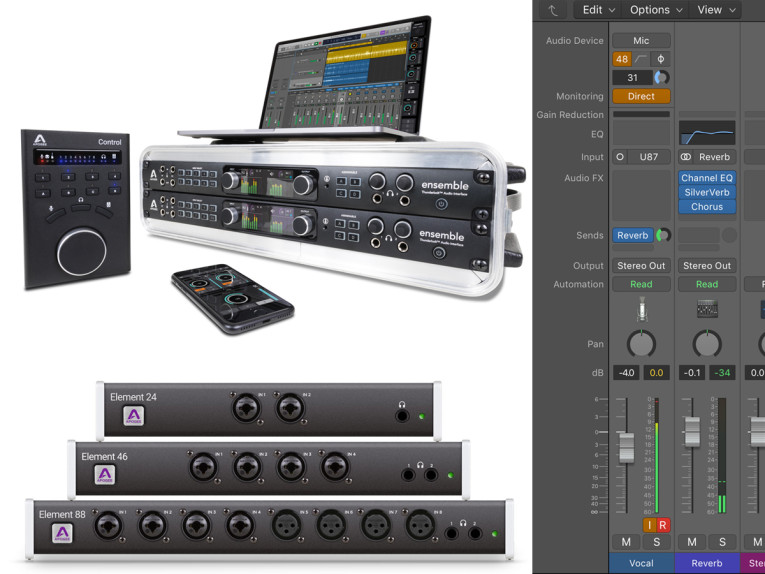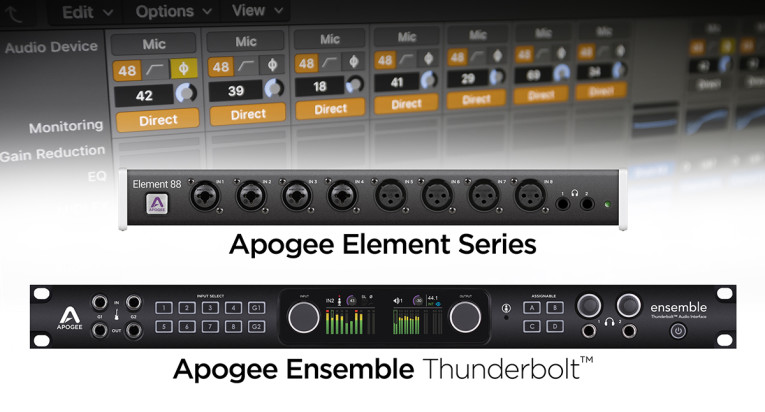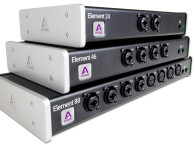
The new feature makes it possible to end distracting input delays for the performer without having to constantly change audio monitoring preferences and interact with a separate low latency monitoring mixer. According to Apogee, "never before has it been so easy to record in Logic without latency – It’s as simple as clicking the Direct button and adding a touch of reverb with an effect send."
The tight integration of Apogee’s recently introduced Ensemble and Element Series audio interfaces with Apple's Logic Pro X and its new Direct Monitoring feature combine to deliver a world-class professional recording workflow to musicians and audio engineers. On July 18, Apple announced Logic Pro X version 10.3.2 introducing bug fixes, performance improvements, and a couple of new features to its popular professional audio editing software. Apple improved the responsiveness of the graphical user interface, introduced an automatic time align feature for improved morphing in Alchemy, and debuted new transpose and fine tune tools for editing the pitch of an audio region.
The newly-implemented Direct button is found in Logic’s Channel Strip Audio Device Controls, where Apogee hardware input parameters including mic pre gain, input type selection and others are currently found. This simplified user experience allows customers working with Apogee hardware and Logic Pro X to focus on a single session window when recording, and offers complete visibility and control of input parameters, and now unprecedented flexibility and control over recording latency.

To learn more about Apogee's Element Series of Thunderbolt audio interfaces, click here.
To learn more about Apogee's Ensemble Thunderbolt audio interface, click here.
Apogee's Ensemble Thunderbolt audio interface benefits also of its new Apogee Control software, built from the ground up to offer a highly customizable user interface that provides multi-unit support and compatibility with the Apogee Control iOS App as well as the Apogee Control hardware remote. This new control software allows connecting two Apogee Ensemble Thunderbolt interfaces to a Mac to double analog inputs and outputs, it supports remote control with an iOS remote app and allows combining any Apogee Element interface to an Ensemble Thunderbolt for I/O expansion.
The latest Apogee Control Mobile for iOS provides wireless control of the hardware settings included in the Apogee Control Essentials Window.
The new Apogee Control hardware remote gives users instant access to Ensemble and Element input and output levels using a large control knob and 3 control knob focus buttons, plus direct access to a wide range of software functions using the 8 user-configurable hardware buttons. Apogee Control hardware remote connects directly to a Mac using the included USB cable.
www.apogeedigital.com






